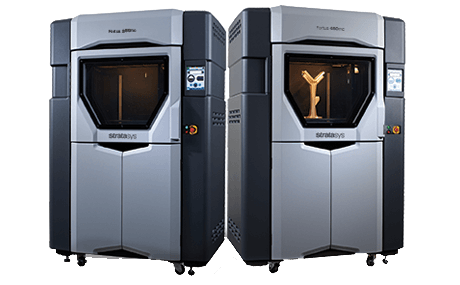Latécoère, the French aircraft design and manufacturing group, is using Stratasys FDM 3D printing technology to speed up its production and development process. So far, the results have been positive.
Latécoère, an aircraft manufacturing company with a hundred year history, has moved its production and development processes into the “future” (well, the seemingly futuristic, but really pretty commonplace nowadays). The company is now using 3D printing technology and is already benefiting from a significant reduction in prototype lead times.
Stratasys FDM additive manufacturing, specifically that from the Fortus 450mc Production 3D Printer, is being used to prototype and create tooling jigs. Amazingly, the aircraft company explains that it has seen a 95% reduction in lead times when compared to its previous method of using CNC machining.
Latécoère can now create production tools in just a couple of days — rather than six weeks. The company claims this new direction for production tooling also cuts costs by 40%. As a result, the faster and more efficient production times are improving business performance too.
“Additive manufacturing has integrated seamlessly into our design and production process, and has seen us enjoy improved lead-times, reduced costs and enhanced operational efficiency. As the requirements of the aerospace industry become more demanding, we’re also mindful of the need to maintain our competitive edge, and Stratasys additive manufacturing enables us to meet that objective,” explains Simon Rieu, Composite and Additive Manufacturing Manager at Latécoère’s R&D and Innovation Center.

3D Printing Parts for Airbus, Bombardier and Dassault
Latécoère services aerospace companies such as Airbus, Bombardier and Dassault. Before making the switch to 3D printing, the company used CNC machining for rapid prototyping which Rieu explains had many limitations and was a long process.
However, he adds that with 3D printing, Latécoère is able to accelerate the design validation process before deciding whether to commit to expensive or time-consuming tooling.
As well as prototyping, the company is also using 3D printing for on-demand manufacturing of customized tools. This optimization also has an effect elsewhere, with Latécoère claiming to notice an improvement in operator efficiency due to being able to perfectly fit the part, no matter the shape.
In terms of the future, Latécoère hopes to use 3D printing for next-gen airplanes by creating final production parts. So far, they’re using the Fortus 450mc to print and test interior parts.
The company has already created various air duct housing components. To do this, they used the printer and Stratasys’ FST compliant ULTEM 9085 material. The aim is to get certification on final production parts which would hopefully take far less time to produce and reduce the weight of the aircraft substantially.
Want to find out more? Visit the Latécoère or Stratasys website.
Source: Business Wire

License: The text of "Aircraft Manufacturer Latécoère 3D Prints for Fast Aerospace Tooling" by All3DP is licensed under a Creative Commons Attribution 4.0 International License.